Introduction: Addressing Data Security and IT Operations with the Power of Dual Monitors
In today’s rapidly evolving digital landscape, businesses and organizations are increasingly focusing on two critical aspects: data security and operational efficiency. IT solutions are central to achieving both, with a range of tools and technologies helping protect sensitive information while ensuring smooth and effective system management. One often overlooked yet powerful tool for improving IT service and support operations is the use of multiple monitors, such as a laptop computer screen, 2nd monitor, or monitor dual setups.
This blog will address the intersection of data security, IT service management, and technology deployment, exploring how extra monitors can significantly boost efficiency in areas like:
- Data Security and Privacy Protection: Understanding how IT solutions use encryption, firewalls, and IDS to safeguard data and privacy, while examining the role of multiple monitors in real-time security monitoring.
- IT Support and Service Management: How using extra screens during system troubleshooting improves the speed and accuracy of fault detection and resolution.
- Regulatory Compliance: Navigating the complex landscape of data privacy regulations (such as GDPR), and how leveraging dual monitors can help ensure compliance in IT operations.
- Real-time Monitoring and Performance Feedback: The crucial role of extra screens in managing complex IT infrastructures and providing on-the-spot diagnostics.
In this detailed guide, we’ll explore how integrating 2nd monitors and monitor dual setups can be a game-changer for IT professionals working to maintain robust security systems, optimize troubleshooting, and support critical business operations.
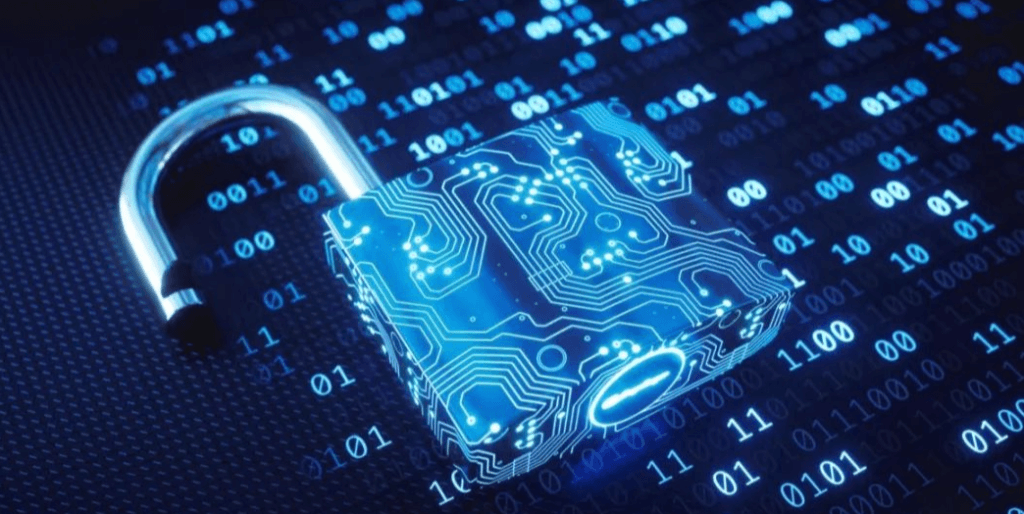
1. Data Security and Privacy Protection: Core IT Solutions for Modern Enterprises
The digital transformation of businesses has brought with it a heightened focus on data security and privacy. From financial data to intellectual property, protecting sensitive information is non-negotiable. Companies must employ a variety of tools and strategies to secure their data, and having the right infrastructure is crucial to achieving this.
Encryption Technologies: Ensuring Data Security
Encryption is one of the fundamental methods for protecting sensitive data. By transforming data into an unreadable format, it ensures that even if an unauthorized party intercepts the information, they cannot access its contents. Modern IT solutions leverage encryption to protect data at rest (stored data), in transit (data being transferred), and during processing.
Here, extra monitors like the 2nd monitor or monitor dual setups can greatly enhance the user experience of IT professionals working with encryption tools. They can view encryption logs, reports, and analysis on one screen while keeping an eye on other systems and networks on the other, improving both monitoring and response time.
Firewalls and Intrusion Detection Systems (IDS): Defending Your Network
Firewalls act as the first line of defense by filtering out malicious traffic, while IDS systems monitor network traffic for suspicious activity, alerting administrators when an intrusion is detected.
The efficiency of managing these security systems can be greatly enhanced by using multiple screens. IT professionals can display real-time alerts, security logs, and detailed analysis across different screens, making it easier to monitor and respond to potential threats swiftly.
Navigating Privacy Regulations (GDPR and Beyond)
Compliance with privacy regulations like GDPR has become an integral part of data protection strategies. GDPR imposes strict requirements on businesses regarding how personal data is stored, processed, and transmitted, and it includes provisions for protecting data at all stages.
For IT teams responsible for compliance, having a laptop computer screen and 2nd monitor setup allows for the seamless viewing of privacy policies, compliance checklists, audit logs, and real-time monitoring of data access. This setup helps IT teams remain compliant while mitigating any risks associated with non-compliance.
2. Boosting IT Service and Operations with Extra Screens
Effective IT service management (ITSM) is crucial for maintaining business continuity. The complexity of modern IT infrastructures, including cloud services, virtualized environments, and on-premises systems, requires constant monitoring and maintenance. With the use of monitor dual setups, IT professionals can handle multiple tasks simultaneously, boosting both productivity and operational efficiency.
Real-time System Monitoring
When managing complex infrastructures, IT professionals need to view multiple data points in real time. A single screen may not suffice, especially when monitoring performance metrics, security events, and system status simultaneously.
By using a 2nd monitor or a monitor dual setup, IT teams can separate tasks across different screens. For example, one screen can show server status, while the second one displays network traffic or system logs. This kind of multitasking allows IT teams to respond quickly to performance issues, security breaches, or system faults.
Improving Troubleshooting and Fault Detection
Troubleshooting technical faults can be time-consuming, especially when dealing with large, distributed systems. Using additional screens during the troubleshooting process can significantly speed up diagnostics and improve problem resolution efficiency.
When a problem arises, IT support teams can use the 2nd monitor to display logs or error messages while performing diagnostic tests on the laptop computer screen. This dual-screen setup enables support teams to work faster, as they no longer need to switch between windows or applications.
Enhanced Collaboration with Extra Monitors
Effective collaboration is vital in IT service management, and extra screens facilitate this by providing more space for teams to communicate and share information. A monitor dual setup allows one screen to display communication tools (like chat or video calls) while the other is used for technical tasks, providing a comprehensive view of all ongoing activities.
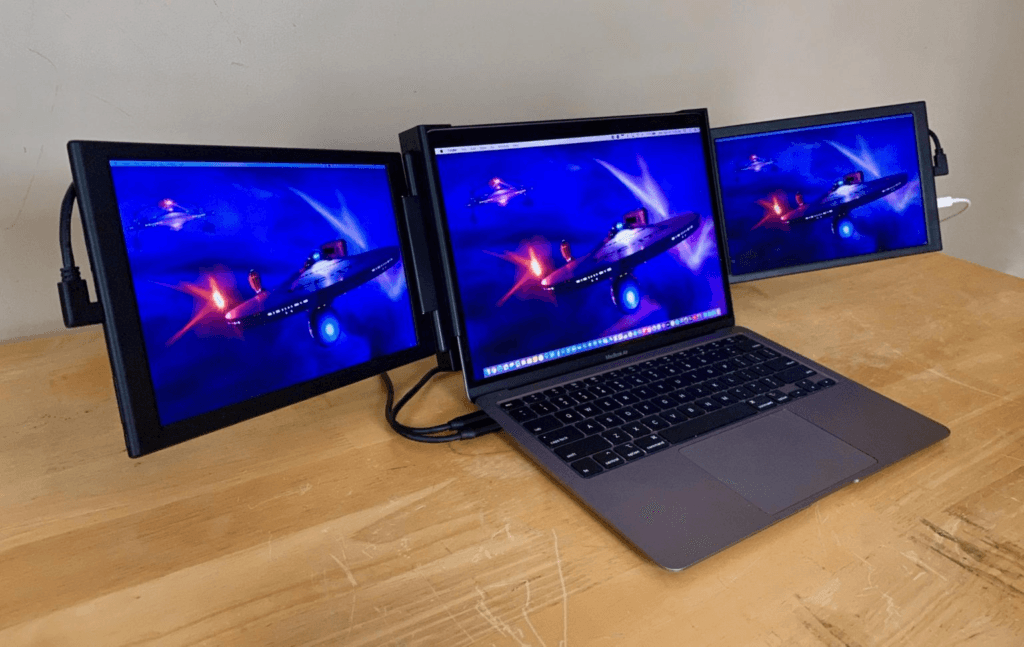
3. The Impact of Multiple Screens on System Performance Monitoring
IT professionals need to ensure the optimal performance of systems and infrastructure at all times. With 2nd monitors, performance dashboards, system alerts, and resource usage stats can be viewed side by side, streamlining the monitoring process and reducing the time needed to identify potential issues.
Managing System Logs and Alerts
Multiple monitors allow system administrators to track logs and system performance in real time. With a laptop computer screen dedicated to performance monitoring and another screen reserved for system alerts or logs, administrators can immediately detect performance dips or potential threats. This enables them to take quick action and avoid potential downtime.
Proactive System Maintenance
Proactive maintenance is crucial for preventing system failures before they occur. With extra screens, IT professionals can continuously monitor system health indicators and act on potential issues before they cause any disruptions. Using multiple monitors allows for better visibility of all metrics and logs, providing a more comprehensive understanding of the system’s performance.
4. Integrating IT Solutions for Real-Time Monitoring and Rapid Response
In a fast-paced IT environment, real-time monitoring is a necessity. The use of monitor dual setups allows IT professionals to work in parallel, boosting both monitoring capabilities and troubleshooting efficiency.
Cloud and Hybrid IT Environments
Managing cloud-based and hybrid IT environments is a complex task, especially when monitoring multiple systems and services simultaneously. Using extra monitors allows for the display of multiple dashboards, alert systems, and service statuses across different screens. This multitasking ability improves system oversight and reduces response times to issues.
Troubleshooting and Real-time Data Processing
When incidents occur, IT teams need to diagnose the problem quickly. By using multiple screens, they can display logs on one screen, diagnostic tools on another, and performance metrics on a third. This approach helps speed up the problem-solving process, enabling faster identification and resolution of issues.
5. Compliance and Regulation Monitoring: Keeping IT Operations Aligned
With the increase in cyber threats and evolving data privacy regulations, staying compliant with industry standards is critical. IT professionals need to ensure their systems meet various legal and regulatory requirements, such as GDPR, HIPAA, or PCI-DSS.
Compliance Dashboards on Extra Screens
A 2nd monitor can display real-time compliance dashboards that show the status of data encryption, access control logs, and audit trails. This allows IT professionals to constantly track compliance metrics and avoid any lapses in adherence to privacy regulations.
Managing Compliance Documentation
Another key benefit of using a monitor dual setup is the ability to view compliance documentation while also working on the technical aspects of system management. IT teams can reference legal guidelines or policy documentation on one screen while actively managing the infrastructure on the other.
6. IT Services: Using Extra Monitors for Increased Productivity
For IT professionals, the ability to work efficiently is crucial for handling day-to-day operations. By using multiple screens, they can improve productivity, enhance focus, and ensure that critical tasks are completed on time.
Efficient Workflow Management
Multiple screens enable IT professionals to manage tasks more efficiently. A laptop computer screen can display the main work interface, while additional monitors can show tasks, notes, or reference documents, allowing professionals to keep all relevant information in view at all times.
Conclusion: Elevating IT Operations and Data Security with Dual Monitors
In the fast-paced world of IT, having the right tools can make all the difference. Utilizing 2nd monitors or monitor dual setups can significantly enhance the efficiency, security, and functionality of IT services and support operations. From improving real-time monitoring to streamlining troubleshooting and ensuring regulatory compliance, extra screens provide IT professionals with the visibility and flexibility they need to stay ahead of the curve.
Whether you are managing data security, monitoring system performance, or responding to incidents, integrating multiple monitors into your IT infrastructure can help streamline operations and drive success.
ONext Hot Selling Products
-
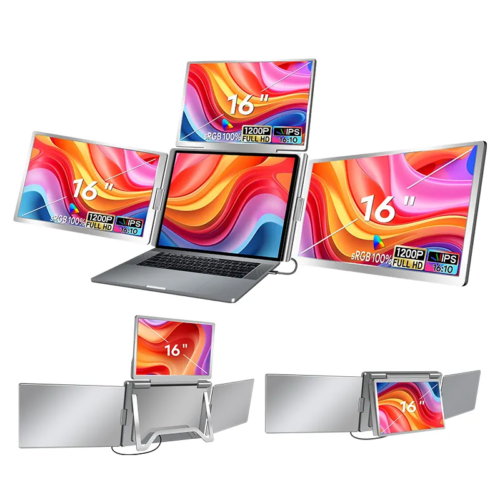 ONext 100% SRGB 16 Inch Quad Monitor 1 Cable for Trifold Laptop Monitors, Vibrant 3-Display for Windows & MacOS
ONext 100% SRGB 16 Inch Quad Monitor 1 Cable for Trifold Laptop Monitors, Vibrant 3-Display for Windows & MacOS -
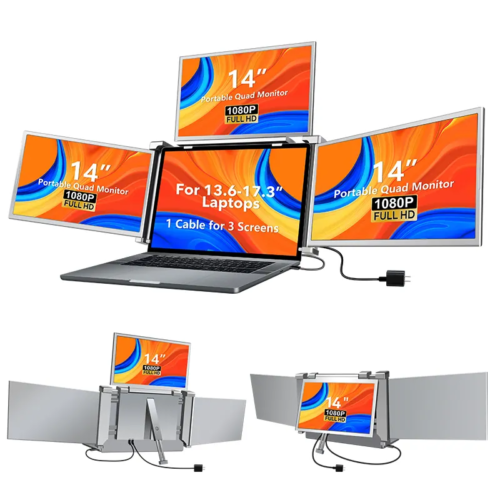 ONext 14″ Quad Monitor Laptop Screen Extender – FHD 1080P, 1 Cable for 3 Screens, Portable IPS for 13.6″-17.3″ Laptops (Win/Mac M1-M3)
ONext 14″ Quad Monitor Laptop Screen Extender – FHD 1080P, 1 Cable for 3 Screens, Portable IPS for 13.6″-17.3″ Laptops (Win/Mac M1-M3) -
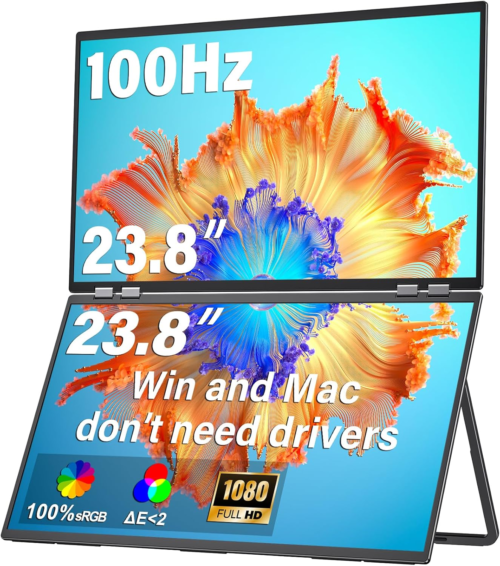 ONext 23.8″ FHD100Hz 100% sRGB Dual Screen Laptop Extra Monitor – 315° Adjustable for Work & Gaming
ONext 23.8″ FHD100Hz 100% sRGB Dual Screen Laptop Extra Monitor – 315° Adjustable for Work & Gaming -
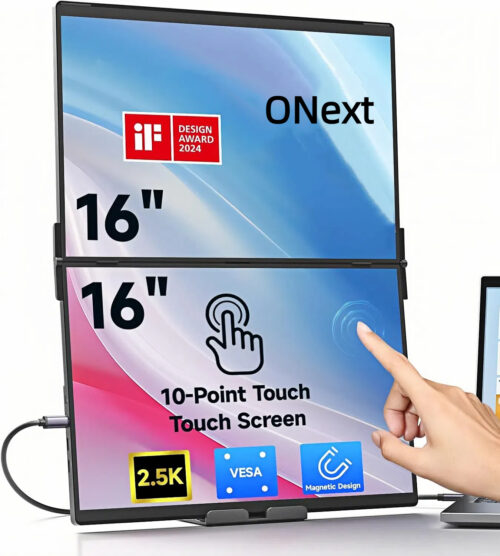 ONext 16″ Laptop Screen Extender Foldable Dual Stacked Portable Monitor with Built-in Hub, Magnetic Design, Single Cable for 1080P Triple Monitor Setup
ONext 16″ Laptop Screen Extender Foldable Dual Stacked Portable Monitor with Built-in Hub, Magnetic Design, Single Cable for 1080P Triple Monitor Setup -
 ONext 18.5″ Laptop Dual Screen Monitor 1080P 100Hz, Foldable Double Screen Laptop Display for Win/Mac
ONext 18.5″ Laptop Dual Screen Monitor 1080P 100Hz, Foldable Double Screen Laptop Display for Win/Mac -
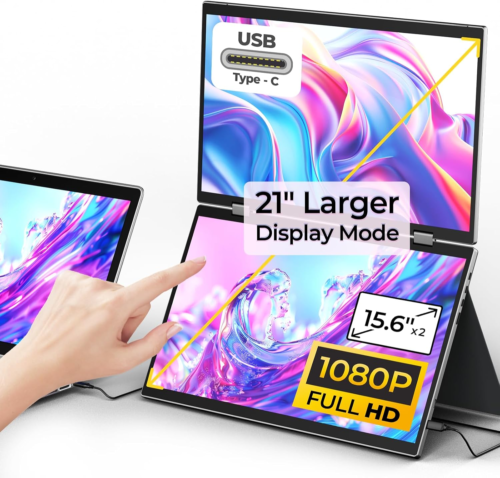 ONext 15.6″ Dual Screen 1080P FHD Stacked Folding Triple Monitor HDMI USB-C Portable Dual Monitor for Laptop Windows Mac (No Driver Needed)
ONext 15.6″ Dual Screen 1080P FHD Stacked Folding Triple Monitor HDMI USB-C Portable Dual Monitor for Laptop Windows Mac (No Driver Needed) -
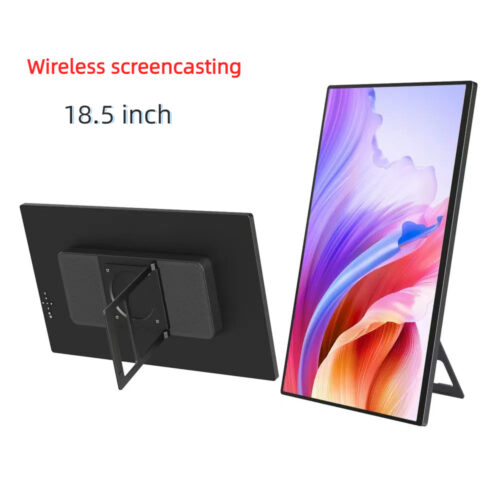 ONext 18.5 inch Portable Laptop Monitor ,Wireless screencasting Laptop Monitors with Kickstand
ONext 18.5 inch Portable Laptop Monitor ,Wireless screencasting Laptop Monitors with Kickstand -
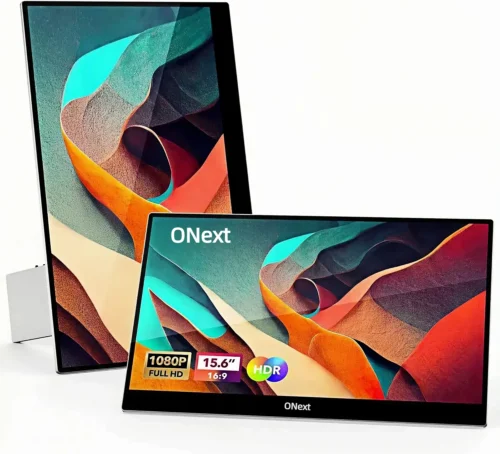 ONext Portable Monitor for Laptop, Slim 15.6 Inch External Monitor with Adjustable kickStand
ONext Portable Monitor for Laptop, Slim 15.6 Inch External Monitor with Adjustable kickStand -
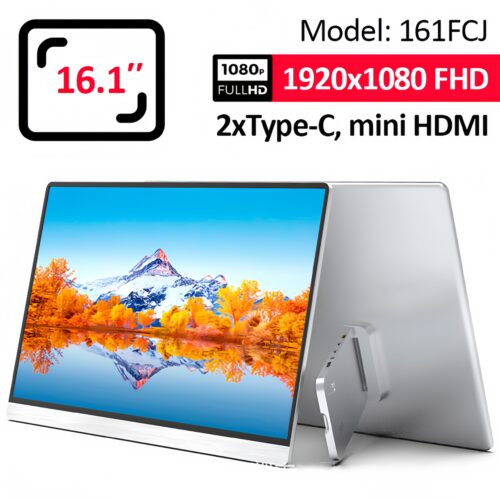 Portable Laptop Screen 16.1 inch Laptop Monitors Full HD, IPS, USB Type-C, Flicker Free, Blue Light Filter Silver With Foldable Stand
Portable Laptop Screen 16.1 inch Laptop Monitors Full HD, IPS, USB Type-C, Flicker Free, Blue Light Filter Silver With Foldable Stand